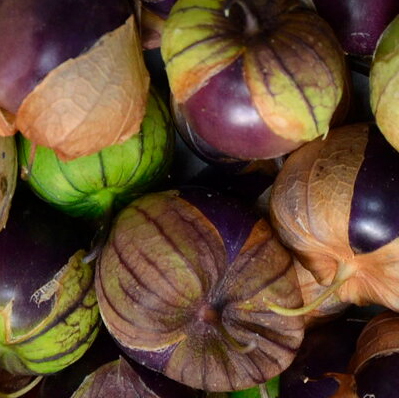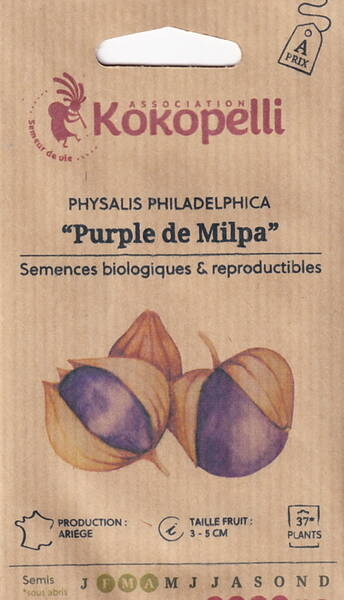Ex Tax: 2.74€
Original and healthy vegetable!
Mid-season variety for open ground cultivation. Period from germination to first maturity 110-116 days. Semi-spreading plant, 60-80 cm tall.
Fruits are flat-round, 3-5 cm in diameter, weighing 28-41 g, light green at technical maturity, yellow at biological maturity. Fruits have a pleasant unique sweet-sour taste, contain large amount of pectin substances giving them gelling properties.
Used fresh, for pickling, marinating, making jam, preserves and jelly.
Physalis is rich in fiber, which promotes healthy intestinal transit. Moreover, high vitamin C content tones the whole body, strengthening the immune system. Potassium and sodium balance supports kidney function, has diuretic effect, and helps control proteins and carbohydrates. High antioxidant content helps protect all body cells and promotes cardiovascular health.
This ancient physalis variety produces purple fruits with distinct flavor. Being the main ingredient of famous Mexican salsa verde, it gives finished dishes a slightly spicy taste.
Note: unripe fruits, like other plant parts, contain toxic alkaloid solanine (though in Mexico they are eaten green and raw without cooking).

Cultivation.
Sowing: grown by direct seeding in late April - early May or with 50-day seedlings planted in early June. Planting scheme 40-60 cm.
Care: optimal temperature for growth and development +20+25°C. Bush may require staking if overgrown.
Harvest: as husks open. Fruits until late autumn. Yield 3 kg/m2.
Bot. syn.: Physalis aequata J.Jacq. ex Nees, Physalis cavaleriei H.Lév., Physalis ixocarpa Brot. ex Hornem., Physalis laevigata M.Martens et Galeotti.
Will decorate your garden and menu!
Annual herbaceous plant of Solanaceae family up to 1m tall.
Two main physalis types: vegetable (Mexican) and berry (South American). Widely used as ornamental plant.
Best predecessors are cucurbits, cabbages, legumes and root vegetables. Plant is shade-tolerant, undemanding to soils, moisture-requiring especially in early development stage. Heat-loving. Seeds germinate at +10+12°C. Optimal growth temperature +20+25°C.
Therefore in North-West region physalis is grown through seedlings. Seeds sown in late March - early April at 1-1.5 cm depth, rate 0.4 g per 100 plants.
Seedlings planted in open ground in late May - early June. Vegetable varieties planted at 3-4 plants/m2 (40x40 cm), berry varieties at 5-6 plants/m2 (40x30 cm).
Pinch all growing points in late July. Care includes loosening, weeding, fertilizing. Harvest without allowing fruit shedding.
Vegetable physalis used in preserves, jams, pickles, sauces. Berry varieties used for jam, preserves, compotes, dried like raisins.
Fruits contain vitamin C, tannins, alkaloids, caffeic acid, pectin, sugars, mucilages and fatty oil.
Physalis long known in folk medicine as diuretic. Fruit decoction used for kidney and bladder stones, ureter inflammation. Whole fruits indicated for jaundice with ascites. Externally, fruit decoction used as compresses for joint inflammation.
Hot decoction recommended for mouth rinsing with toothache.












